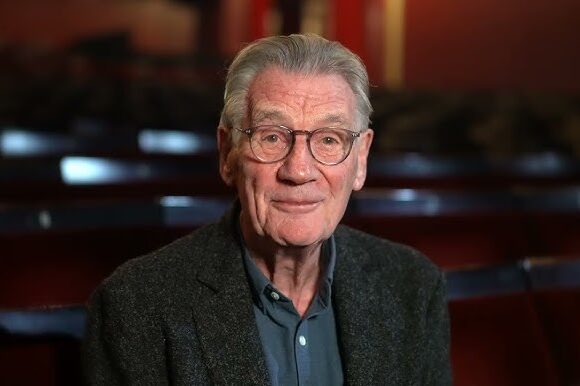
Dance / “Terrain”, Bangarra Dance Company. At Canberra Theatre until July 30. Reviewed by SAMARA PURNELL.
AFTER a beautifully descriptive “Welcome to Country” by local elder Paul House, the curtain lifted on Bangarra’s “Terrain”.
Originally performed in 2012, choreographer Frances Rings’ dance about Kati Thanda-Lake Eyre is touring again, this time to Canberra.
Nine segments depict features of the terrain, geographical features, the environment and culture of the Arabunna people who inhabit this vast area.
The program describes more about land rights, lineage and struggle for recognition and the impact of man than the dances, on the whole, appear to portray.
As lightning sounds, a ball of dancers makes its way across the stage, through flashes of light. David Page’s soundscape uses a sonic architecture to make screeching instruments sound like frogs, where sirens, guitars and strings give way to whispered words.
While trying to relate some of the jarring sounds to noises of weather or animals, there also lingers the suspicion that it may be a more ominous, foreboding reference. It broke the meditative state created by the dance unfolding on stage. Unnerving hovering notes gave way to orchestral soundscapes, which in “Terrain” feels experimental, rather than later works by Page, that have been refined over time.
Karen Norris’ lighting design is soft and pretty, for the majority of the production. Muted greys, rose-taupe backdrops and soft, yellow lighting beautifully represent the changing light, seasons and land. Stark white backdrops and costumes depict the vast salt pan of the lake.
“Shields”, performed by the men, was billed as a struggle for land rights, but was less blatant in the execution of the dance, although the structured lines and formations gave it a less ritualistic and more formalised appearance than expected. Flashes of black on the inside of the white shields were used to great effect and the piece was powerful and visually striking.
Women representing spinifex moved across the stage like birds. Jennifer Irwin’s intricate costumes had the women dancing in long, textured skirts, with sculpted tufts of fine branches as headdresses. Cute, lighthearted dance moves made this a lovely piece to watch.
In “Salt”, two men, lizard-like in dress and movement, move around the stage in a wonderfully precise pairing. The contemporary-style solo was incredibly well done.
Two more intense dances with thumping music and striking costumes were performed. One, in stunning costumes of black with red, as if dipped in red dye. Screaming wind sounded like bullets whizzing past. Formations created by the dancers conjured up flowers or plants spreading across the landscape.
The final pieces were performed in front of gold lines shining across the backdrop. Songlines perhaps or water channels, the sun glimmering across the land or water. Both men and women adorned in pleated skirts and dresses of soft, jewelled colours in blue, purple and green performed a beautiful dance, signifying a “deluge” but the sweet choreography subtly represented mating rituals of couples and creatures. Surprisingly, two men briefly partnered each other in a dance that was clearly a male-female pas de deux.
“Terrain” presents a significantly different style of choreography by Rings, who will take the reins from Stephen Page as artistic director in 2023, from what audiences have seen with Stephen Page’s choreography over the past few years. “Terrain” is more balletic, contemporary, with more partnering work, pas de deux and fewer dances using only male or female groups. “Terrain” has not dated since its inception and presents as a contemporary dance depicting indigenous culture. Previous productions could be described as indigenous dance and culture presented by a contemporary company.
The production is pretty, mostly peaceful and easy to watch and enjoy. “Terrain” is danced by a uniformly strong ensemble, but at times lacks synchronicity.
This beautiful production creates a desire to discover more about the vast and extraordinary Kati Thanda-Lake Eyre, which covers an area of 9500 square kms.
The backdrop of gold lines remained visible after the curtain call as the production remains in mind after the final bows.
Who can be trusted?
In a world of spin and confusion, there’s never been a more important time to support independent journalism in Canberra.
If you trust our work online and want to enforce the power of independent voices, I invite you to make a small contribution.
Every dollar of support is invested back into our journalism to help keep citynews.com.au strong and free.
Thank you,
Ian Meikle, editor



![Evie Hudson is a woman with amnesia, who forgets the last 13 years. Piecing her life back together, she navigates the harsh realities of coercive control.
Evie is the leading character in local author @emmagreyauthor's second novel Pictures of You.
Her debut book, The Last Love Note, sold more than 100,000 books worldwide within a few months of being published last year.
“I think that using amnesia really helped [show the effects of coercive control] because she had that sense of being completely lost in her own life,” Emma says of her new work of fiction.
To read the full story and find out more about this fabulous local author and her latest novel, visit our website at citynews.com.au or click the link in our bio! 📚✒️
#canberra #local #canberralocals #canberralife #australia #author #localauthor #Picturesofyou #coercivecontrolisabuse #dvawareness #bestsellingauthor #canberraauthor #localnews #citynews](https://citynews.com.au/wp-content/plugins/instagram-feed/img/placeholder.png)
Leave a Reply